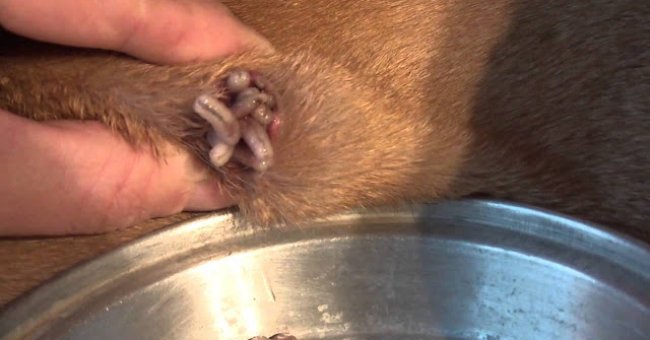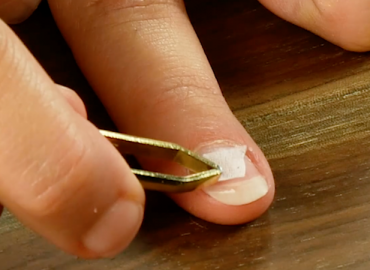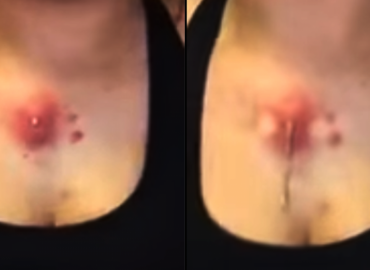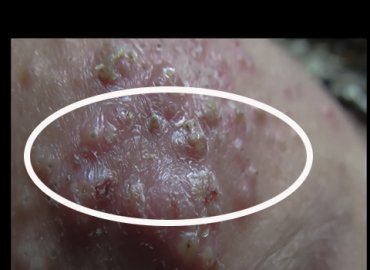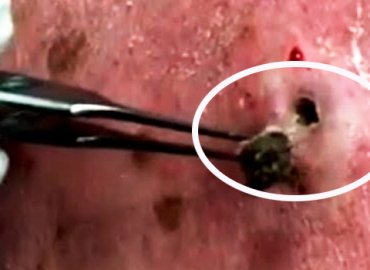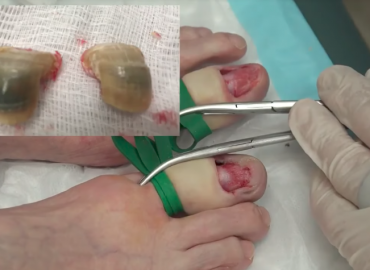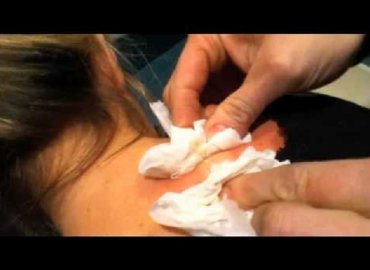I think we’ve maxed out our “photos that make you queasy” quota, so we will go with a g-rated picture of some mangoes for this post. If you want to see more graphic content, you can scroll down to the video we have embedded in the post.
What are mango worms?
First, the mango worm goes by many names. It is technically a fly larva and it also goes by the names mango fly, putzi fly and tumbu fly depending on where you are.
Where are mango worms found?
Mango worms are found throughout tropical areas of sub-Saharan Africa, but is more common in certain regions (Central Africa, for example). You could come across them in another part of the world, too, but only if a human or animal traveled while infected with the worms.
The worm works like this:
Adult female worm lays a few hundred eggs into the soil OR onto some damp clothing that is hanging out to dry.
The larvae penetrate the skin of the host and take up residence in the subcutaneous tissue, a layer of skin that has fat and connective tissue filled with blood vessels and nerves.
Then they grow and fatten up.
After 8-12 days, a boil will have formed.
It will itch and then get increasingly painful before it…
actually opens up so the worm can come out to play.
The worm then falls to the ground where it buries itself in order to go into its final stage of growth before turning into a fly.
Got it? Good.
How can mango worm be prevented?
Mango worm is generally very uncommon for travelers to come across, but there are certainly a few steps you can take to really minimize your risk. For one, do not walk around barefoot on soil. By the same token, don’t roll around in the soil.
Never a good idea.
As far as your clothes go, if you are in an area where mango worm is prevalent, it would be best to machine dry your clothes or iron them after leaving them out to line dry. The heat will effectively kill the larvae.
Mango worm treatment
There is no medication you can take that will kill the mango worm. You simply have to wait for it to come out. Alternatively, you can cover the boil with vaseline or a similar product and wait till the worm pops out on its own (the vaseline will cut off its access to oxygen). In rare cases, a visit to a clinic may be required to extract the worm.
Mango worms do not pose a serious health risk. They do not carry other diseases with them and they do not cause complications themselves outside of the boil that they create. It is important, however, to remember to thoroughly disinfect the area after the worm has emerged from the body.
Distinguish between cysts in the breast and tumors. Cysts can be in one or both breasts. Without a mammogram or needle biopsy it is almost impossible to distinguish between the two different types of lumps in the breast. Symptoms of a breast cyst will include:
- Smooth, easily movable lump with distinct edges
- Pain or tenderness over the lump
- Size and tenderness will increase just before your period starts
- Size and tenderness will decrease when your period ends
Understand cystic acne. Acne is a general term that describes a variety of different types of pimples, blackheads, pustules, whiteheads and cysts. Cystic acne are nodules that are red, raised, often 2–4 mm in size and nodular and are the most severe form of acne. The infection in a cystic acne is deeper than that in other pustules or whiteheads. Cystic acne is painful.
Identify a ganglion cyst. These are the most common types of lumps found on the hand and wrist. They are not cancerous and often harmless. Filled with fluid, they can quickly appear, disappear or change in size. They do not require treatment unless they interfere with function or are unacceptable in appearance.
Determine if pain is from a pilonidal cyst. In this condition there is a cyst, abscess or dimple that forms in the crease between the buttocks that runs from the lower end of the spine to the anus. It can be caused from wearing tight clothing, excess body hair, sitting for long periods of time or obesity. Symptoms can include pus from the area, tenderness over the cyst, or the skin may be warm, tender or swollen near the tailbone. Or there may not be any symptoms beside a pit or dimple at the base of the spine.
Distinguish a Bartholin gland cyst. These glands are located on either side of the vaginal opening to lubricate the vagina. When the gland becomes obstructed, a relatively painless swelling forms called a Bartholin’s cyst. If the cyst is not infected you may not notice it. An infection can occur in a matter of days causing tenderness, fever, discomfort walking, pain with intercourse, and a tender, painful lump near the vaginal opening.
See a doctor for swelling in the testicles. All testicular swelling must be diagnosed by a physician to determine the differences between a cyst, cancerous growth, hydrocele or infection in the testicles. A testicular cysts, also called a spermatocele or epididymal cyst, is typically a painless, fluid-filled, noncancerous sac in the scrotum above the testicles. T
Consider getting a second opinion if you are not satisfied with your physician’s diagnosis and treatment. Although most epidermoid and pilar cysts do not require treatment from a physician, if you do seek medical advice and are not satisfied with the results seek a second opinion. Most sebaceous and epidermoid cysts are straightforward, but there are other conditions that may mimic these cysts.
In a case study written in the Royal College of Surgeons of England, the authors presented two cases in which melanoma and a deep oral cavity were originally mistaken for a sebaceous cyst.
There are a variety of other infectious processes that may be mistaken for a sebaceous cyst, including boils, furuncles and carbuncles.

